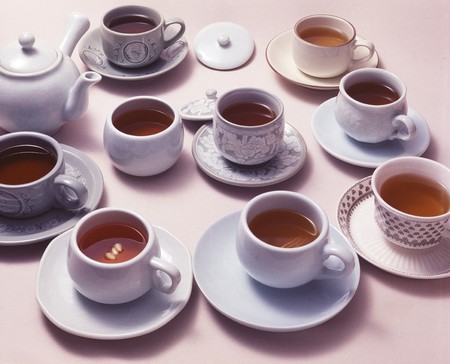Early Days: Coffee’s Introduction to America
When we talk about the story of coffee beans in the United States, we have to start with their arrival on American shores. Coffee first made its way to North America in the mid-17th century, entering through bustling international ports like New York, Boston, and Charleston. Back then, tea was the beverage of choice among colonists, but as political tensions with Britain grew—especially after the infamous Boston Tea Party in 1773—Americans began searching for alternatives. Coffee quickly rose in popularity, not just as a drink but as a symbol of independence. Colonial kitchens started brewing coffee using beans imported mainly from the Caribbean and South America. Although early methods were basic—think boiling ground beans or steeping them in pots—the ritual of making and sharing coffee became embedded in daily life. From merchant docks to family hearths, coffee’s journey mirrored America’s growth: diverse, adaptive, and always looking ahead.
Commercial Growth and Coffeehouses
The rapid expansion of coffee consumption in the United States during the 18th and 19th centuries was closely tied to the rise of coffeehouses, which quickly became social and commercial hubs across burgeoning American cities. As imported coffee beans grew more accessible, entrepreneurs established coffeehouses that provided not only a place to drink coffee but also a venue for lively debate, business transactions, and community gatherings. These establishments played a significant role in shaping early American society, echoing the European tradition while adapting it to local needs and culture.
The Rise of Coffeehouses
By the mid-1700s, coffeehouses had become fixtures in cities like Boston, New York, and Philadelphia. Unlike taverns—which were often associated with alcohol and rowdiness—coffeehouses projected an image of sobriety and intellectual engagement. Patrons from all walks of life gathered to discuss politics, read newspapers, or simply enjoy a cup of freshly brewed coffee. This inclusivity fostered civic engagement and helped spread new ideas throughout the colonies.
Impact on Social Life
Coffeehouses were more than just places to drink coffee; they served as venues for organizing political movements, especially leading up to the American Revolution. Figures such as John Adams and Paul Revere frequented these establishments, using them as informal headquarters for planning and discussion. The egalitarian spirit of the coffeehouse encouraged open dialogue among merchants, artisans, and intellectuals alike.
Economic Influence
The proliferation of coffeehouses also stimulated economic growth by creating demand for imported beans and related goods. Merchants built networks to import beans from the Caribbean and South America, while local businesses thrived by supplying cups, pots, and other essentials. Over time, some coffeehouses evolved into larger enterprises or even transformed into early hotels or clubs catering to specific clientele.
Coffeehouse vs. Tavern: A Comparison
| Aspect | Coffeehouse | Tavern |
|---|---|---|
| Main Beverage | Coffee | Alcohol (beer/spirits) |
| Social Function | Discussion, commerce, reading | Recreation, drinking |
| Cultural Image | Sober/intellectual | Boisterous/rowdy |
This unique environment laid the foundation for future innovations in how Americans consumed—and thought about—coffee. Coffeehouses not only popularized coffee drinking but also fostered a culture that prized conversation and connection over mere consumption.

3. Industrial Era and Mass Importation
The Industrial Revolution marked a pivotal turning point in the history of coffee beans in the United States. As America moved from an agrarian society to an industrial powerhouse during the late 19th and early 20th centuries, advances in transportation and manufacturing made coffee more accessible than ever before. Steamships, transcontinental railroads, and improved port infrastructure enabled the efficient importation of vast quantities of green coffee beans from Latin America, Africa, and Asia.
During this era, several large-scale coffee importing companies emerged, most notably Folgers and Maxwell House. These brands pioneered mass production techniques, such as vacuum-sealed canning, which helped preserve freshness and extended shelf life—critical factors that contributed to the growing popularity of coffee across all social classes. Coffee was no longer a luxury for the elite; it became a staple beverage for working Americans, fueling productivity in factories and offices alike.
This period also saw the rise of advertising campaigns that positioned coffee as an essential part of American daily life. Slogans like “Good to the Last Drop” resonated with consumers and reinforced coffee’s role as a morning ritual and a symbol of hospitality. The combination of technological innovation, effective marketing, and mass importation fundamentally transformed American coffee consumption patterns, setting the stage for future waves of coffee culture and innovation.
4. Coffee and American Culture
Coffee is more than just a beverage in the United States—it’s an essential part of daily life and a symbol of American culture. The way coffee is consumed, discussed, and celebrated has evolved alongside the nation itself, weaving its way into workplaces, homes, and even the fabric of pop culture.
Coffee at Work: Fueling Productivity
From the early 20th century onward, coffee became synonymous with the American workplace. The “coffee break” was institutionalized during World War II to boost morale and productivity, and it remains a staple in office life today. Whether it’s a quick cup from a break room pot or a trip to a local café, coffee rituals help structure the workday for millions of Americans.
Coffee in Pop Culture
Over the decades, coffee has found its way into music, movies, and television. From classic sitcoms like “Friends” set in Central Perk to countless scenes of characters meeting over cups of joe, coffee shops have become iconic gathering spots—a third place between home and work. This cultural representation mirrors real-life trends as cafes serve as community hubs across American cities and towns.
Distinctive American Coffee Habits
American coffee-drinking habits are unique compared to many other countries. While espresso-based drinks are popular, most Americans still favor drip-brewed coffee served in larger cups. The rise of specialty coffee shops has diversified preferences, but some traditions remain distinctly American.
| Habit | Description |
|---|---|
| Drip Coffee | The most common preparation method; large mugs and refill culture are typical. |
| Coffee To-Go | Americans embrace mobility—drive-thrus and takeout cups are everywhere. |
| Sugar & Cream | Many prefer their coffee lightened and sweetened, reflecting personal taste freedom. |
| Social Coffee Drinking | Cafés double as social spaces for meetings, studying, or relaxing alone. |
The Evolution Continues
Coffee’s role in American society keeps shifting as new generations bring fresh preferences. Cold brew, nitro coffee, and plant-based creamers are just a few recent innovations that show how Americans continue to reinvent their relationship with this beloved beverage—all while maintaining the core rituals that make coffee such an enduring part of everyday life.
5. The Rise of Specialty Coffee
By the late 20th century, coffee culture in the United States underwent a remarkable transformation with the rise of specialty coffee. This movement was fueled by a growing segment of Americans who developed a deep appreciation for quality and flavor diversity beyond the standard cup of joe. As consumers became more discerning, small-batch roasters began to emerge across the country, championing direct trade relationships with coffee farmers and emphasizing the unique characteristics of beans from different regions.
The specialty coffee wave can be traced back to pioneering companies and independent shops that prioritized freshness, ethical sourcing, and meticulous roasting techniques. These businesses educated their customers about origins, varietals, processing methods, and tasting notes—terms once reserved for wine connoisseurs. Local cafes started brewing single-origin coffees, offering pour-over methods, and hosting cuppings that encouraged customers to explore nuanced flavors like citrus, chocolate, or floral undertones.
This new approach resonated with American values of innovation and craftsmanship. In cities like Seattle, Portland, San Francisco, and New York, specialty coffee shops became cultural hubs where baristas were celebrated for their skill and knowledge. The movement also spurred innovations in brewing technology and sustainable practices, reshaping expectations for what a good cup of coffee could be. By embracing transparency and quality at every step—from farm to cup—the specialty coffee industry set new standards and inspired a nationwide appreciation for coffee as both an artisanal product and a daily ritual.
6. Innovation and Sustainability in the U.S. Coffee Scene
The American coffee landscape has undergone a remarkable transformation in recent years, driven by an emphasis on innovation and sustainability. While the United States has historically relied on imported beans, today’s coffee industry is focused not just on quality but also on ethical sourcing and environmental responsibility. This shift is evident at every stage of the coffee journey—from the farm to the cup.
Sustainable Sourcing: Beyond Fair Trade
American roasters and cafés are increasingly prioritizing direct trade relationships with farmers, ensuring that growers receive fair compensation while promoting environmentally responsible farming practices. Certifications like Rainforest Alliance and USDA Organic have become more common, reflecting consumer demand for transparency and accountability in how coffee is produced and sourced.
Roasting Technology: Precision Meets Artistry
Technological advancements have revolutionized coffee roasting in the U.S., allowing for unprecedented control over flavor development and consistency. State-of-the-art roasting machines equipped with data analytics help roasters fine-tune profiles, minimize waste, and experiment with unique processing methods. This commitment to both science and artistry has raised the standard for specialty coffee across the country.
The Third Wave Coffee Movement
The third wave coffee movement—an American-born phenomenon—has redefined how people experience coffee. Moving beyond mass production, third wave cafés emphasize single-origin beans, artisanal brewing methods, and deep knowledge about the origins and characteristics of each cup. Baristas act as educators, guiding customers through tasting notes and preparation techniques, making coffee appreciation an interactive experience.
Local Innovation: Coffee Grown in the U.S.
While most beans are still imported, small-scale coffee farms in Hawaii and California are gaining attention for their high-quality, locally grown beans. These farms serve as testbeds for sustainable agriculture methods and demonstrate America’s growing interest in homegrown coffee innovation.
Looking Forward: Sustainability as a Core Value
As consumers become more eco-conscious, American coffee companies are investing in biodegradable packaging, energy-efficient equipment, and community-focused initiatives. The journey from import to innovation is ongoing, but one thing is clear: sustainability and creativity are now at the heart of America’s ever-evolving coffee culture.


